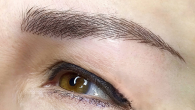
The Pros and Cons of Zinc Oxide Sunscreens: Health, Environment, and Cost
As an essential component of many sunscreen products, zinc oxide has been lauded for its ability to block a broad spectrum of ultraviolet (UV) rays. It works as a physical barrier on the skin, reflecting both UVA and UVB light, thus protecting the dermis from potential damage. However, beyond its acclaimed benefits lie certain disadvantages that are worth discussing. This article aims to shed light on the lesser-known downsides of using zinc oxide in sunscreen formulations, examining health concerns, environmental impacts, as well as functional and economic drawbacks.
Exploring the Cons of Zinc Oxide in Sunscreens

While zinc oxide is generally recognized as a safe ingredient in sunscreens, users and environmental advocates have expressed several concerns. These range from the potential for skin irritation to the environmental risks associated with its use. Moreover, certain aesthetic and practical issues have led many consumers to seek alternative sun protection solutions.
Potential Health Concerns Linked to Zinc Oxide
When using zinc oxide, there’s always a risk of skin irritation, especially for individuals with sensitive skin. Allergic reactions, though rare, are also reported anecdotally by some users. An ongoing debate pertains to the safety of nanoparticle formulations of zinc oxide, which some studies suggest may penetrate the skin and cause adverse effects, although current evidence indicates that zinc oxide nanoparticles remain on the skin’s surface and are generally regarded as safe.
Environmental Implications of Zinc Oxide Usage
The impact of zinc oxide on our environment, particularly on marine life, raises another set of concerns. When sunscreen is washed off the skin during activities such as swimming, traces of zinc oxide can contribute to the degradation of coral reefs, which are already vulnerable due to climate change and pollution. This has prompted scientists and consumers alike to question the environmental sustainability of traditional zinc oxide formulations.
The Functional Drawbacks of Zinc Oxide-Based Sunscreens
Users often complain about the white cast and thick texture associated with zinc oxide sunscreens, making them less desirable for daily use. These products can also be challenging to apply evenly and may need frequent reapplication for effective sun protection. Moreover, mixing zinc oxide sunscreens with other skincare can be problematic, affecting the overall aesthetic appeal and potentially diminishing the efficacy of the sunscreen.
Addressing Manufacturing and Cost Concerns

In comparison to chemical sun filters, the production of zinc oxide sunscreens might be more resource-intensive, which is reflected in the price. Consumers focused on budget-friendly options may find themselves grappling with the cost-benefit analysis of purchasing zinc oxide formulations. Here is a table that compares the average price range of zinc oxide sunscreens to chemical sunscreens:
| Type of Sunscreen | Average Price Range |
|---|---|
| Zinc Oxide Sunscreens | $10-$30 |
| Chemical Sunscreens | $5-$25 |
Navigating the Zinc Oxide Debate: Tips for Consumers
It’s vital for consumers to navigate the zinc oxide debate with a well-rounded perspective. While it’s important to stay protected from harmful UV rays, it’s equally crucial to consider other factors like individual health requirements and environmental impact. Here are some tips to help make an informed decision:
- Research sunscreen ingredients and understand their potential impact on your skin and the environment.
- Consider trying non-nano zinc oxide formulations that are less likely to penetrate the skin and harm marine environments.
Conclusion
In conclusion, while zinc oxide is a popular ingredient in sunscreen due to its broad-spectrum sun protection capabilities, it is not without its drawbacks. Potential health risks for sensitive individuals, the environmental toll on our oceans, and functional limitations are aspects that require serious consideration. The decision to use zinc oxide sunscreens should therefore be made with a holistic view of the product’s implications – evaluating personal health needs, environmental sustainability, and practicality.
FAQs About Zinc Oxide in Sunscreens
- 1. Can zinc oxide cause skin irritation?
- Yes, zinc oxide can sometimes cause skin irritation or an allergic reaction, but it is generally well-tolerated by most people.
- 2. Are there environmental concerns associated with using zinc oxide in sunscreen?
- There are environmental concerns, as zinc oxide can affect marine ecosystems when washed off in water, particularly impacting coral reefs.
- 3. Is it true that zinc oxide sunscreens can leave a white cast on the skin?
- Yes, zinc oxide can leave a white cast, but newer formulations attempt to reduce this effect for a more transparent application.
- 4. Are zinc oxide sunscreens more expensive than chemical sunscreens?
- Zinc oxide sunscreens can be more expensive, but this may vary based on brand, formulation, and other factors.
- 5. How do I choose a safe and effective sunscreen if I have concerns about zinc oxide?
- Select a sunscreen that offers a broad spectrum of protection and consult a dermatologist to find a product that matches your skin type and values.







